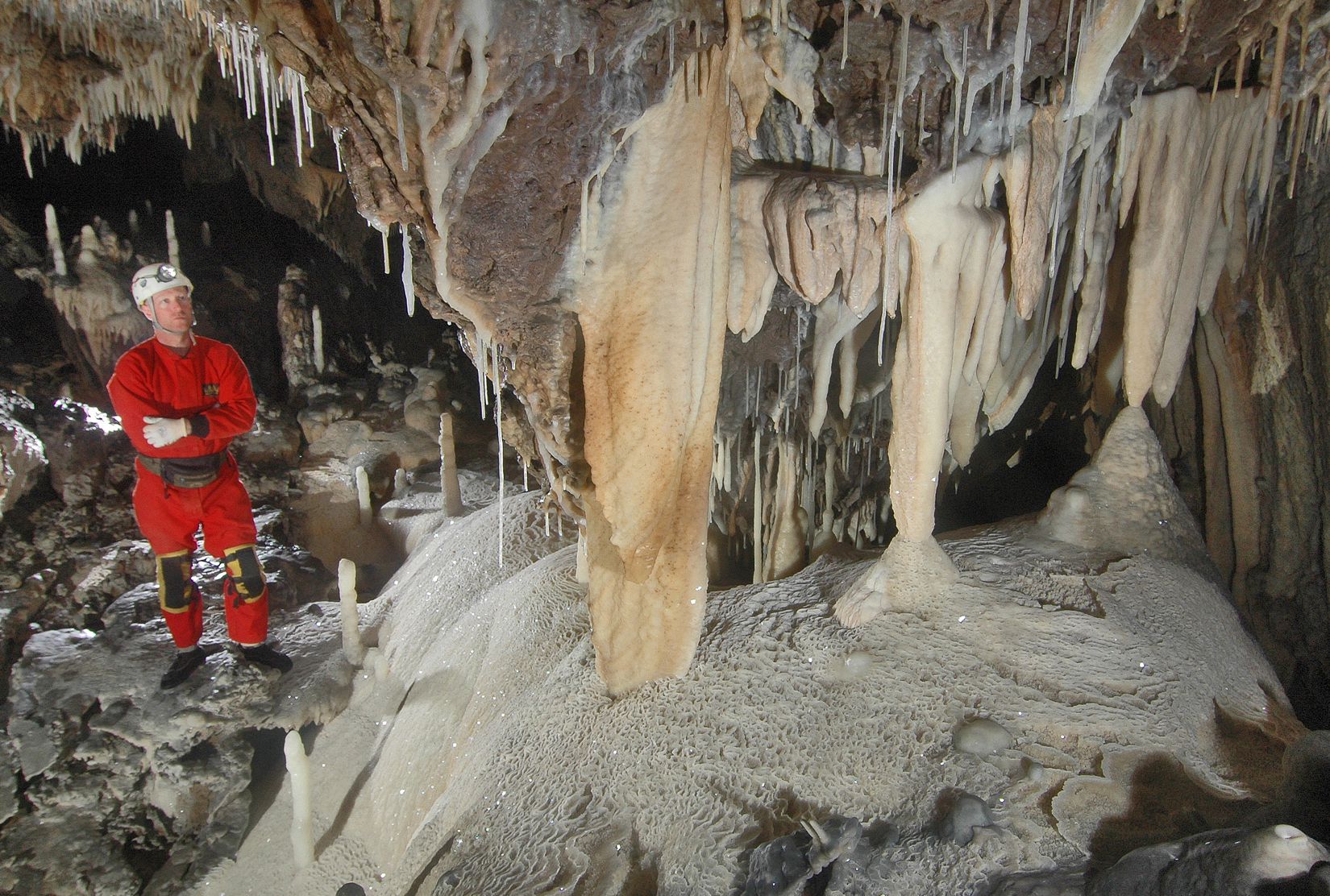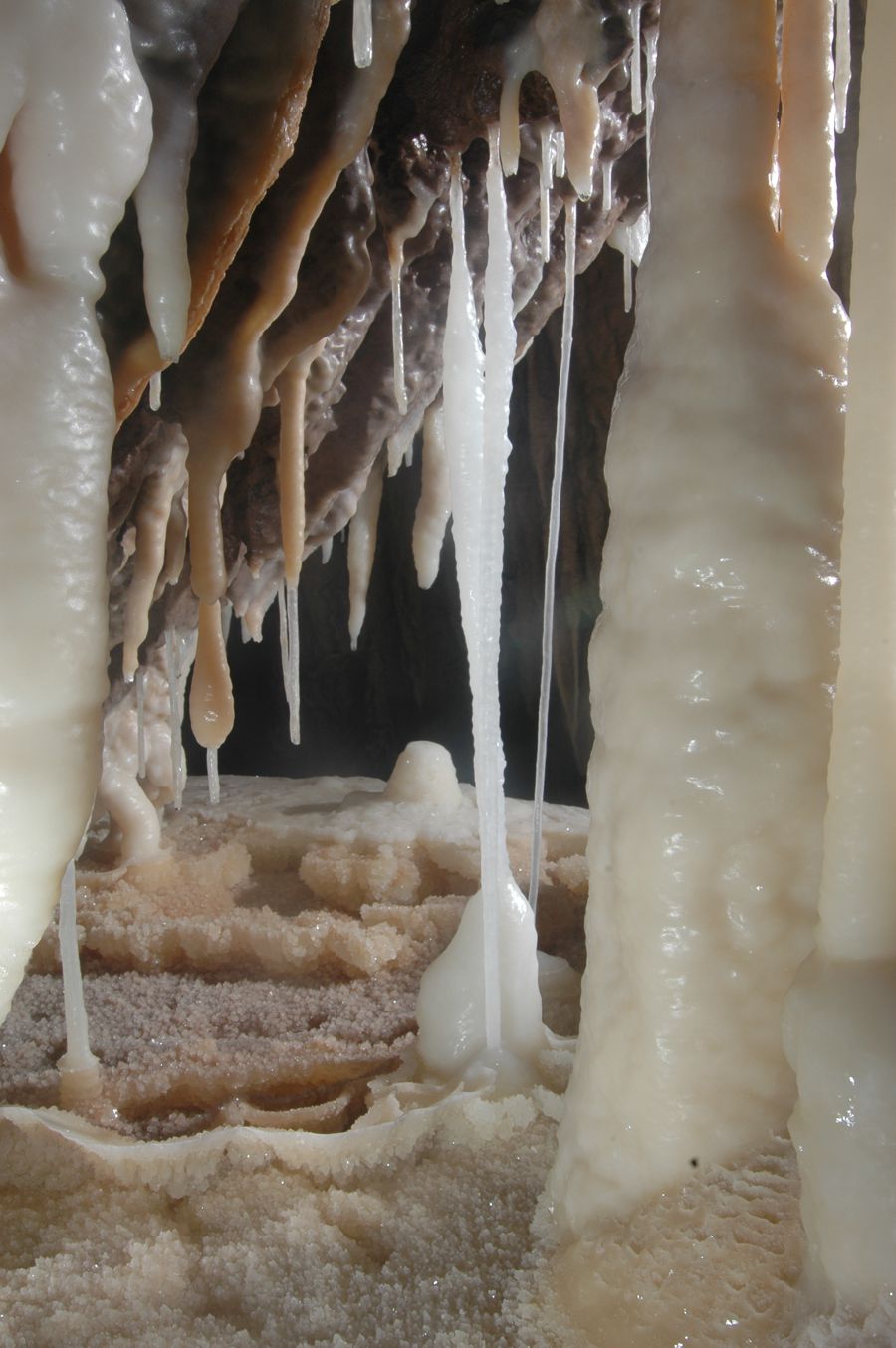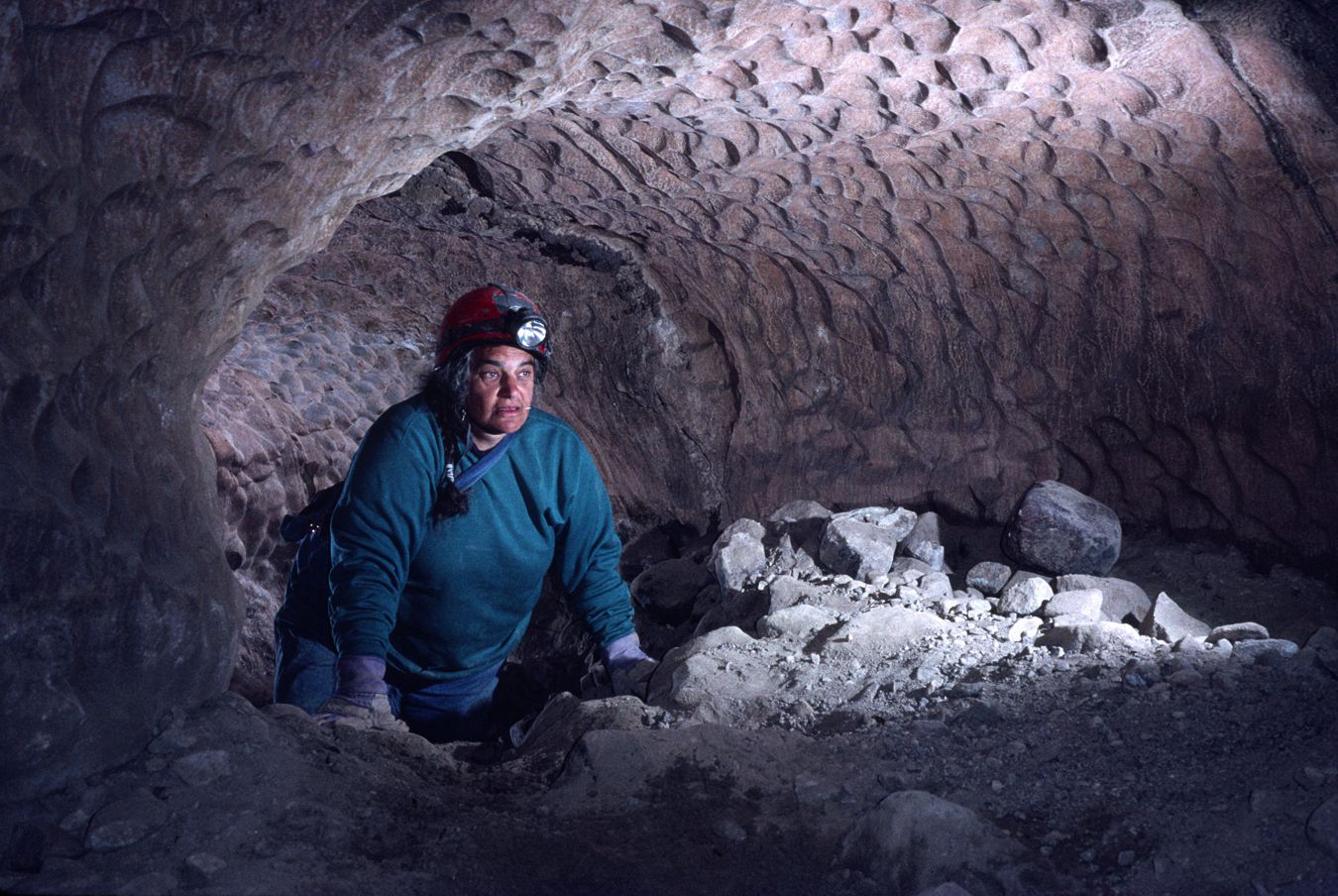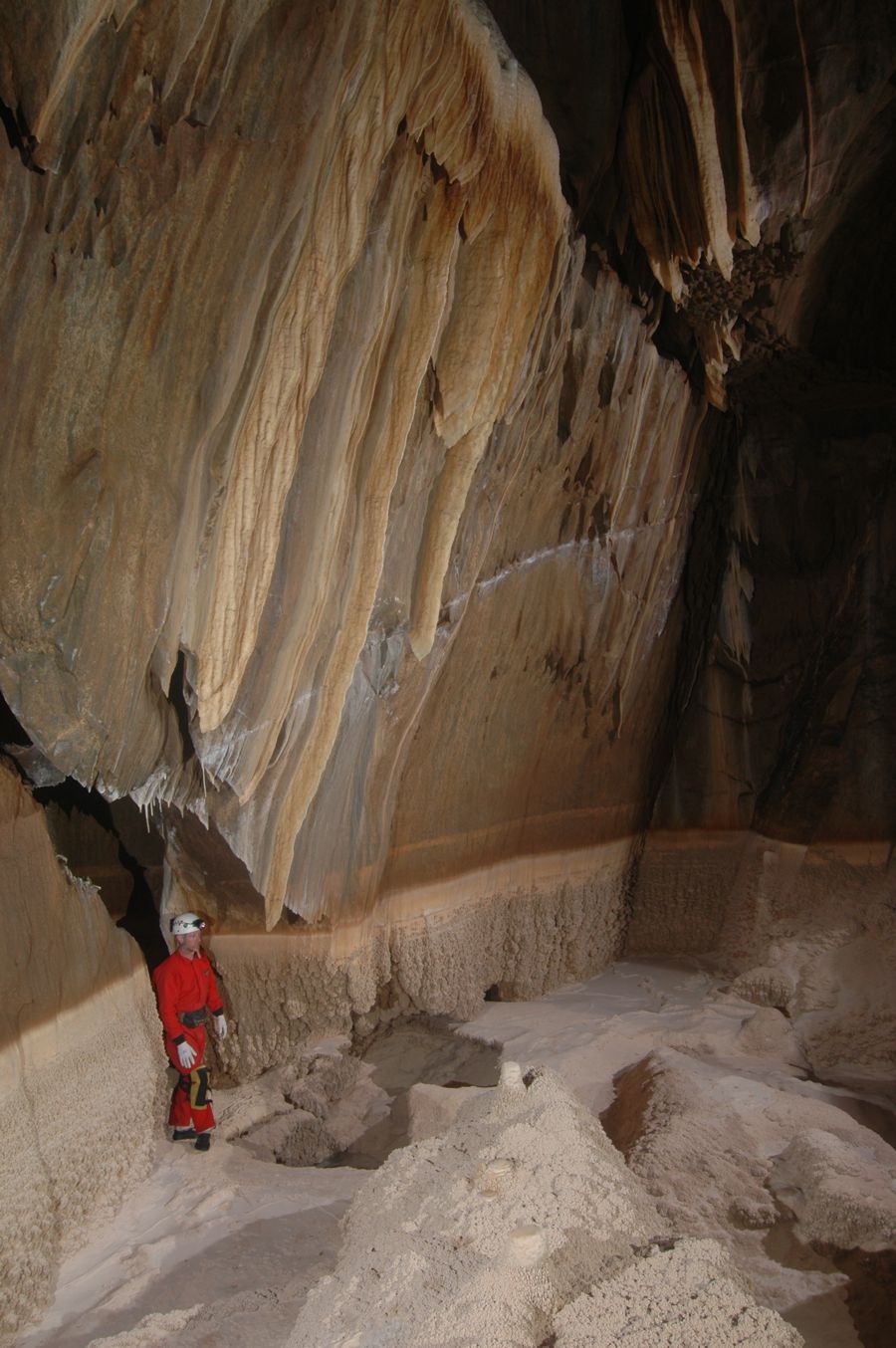
These caves are the most common and well know
Limestone and marble caves have stalactites and stalagmites and frequently underground streams.
Limestone Caves
When people think of caves they picture a dark hole with pointy stalactites hanging down for the ceiling like icicles on a cold night. Caves with these formations are formed in the rocks limestone, dolomite and marble. These cavescan be found in the California desert, in the southern Sierra Nevada, in the Mother Lode County, in the Santa Cruz Mountains and in the Klamath Mountains in the northwest corner of the state.
The three types of rocks are closely related. They all initially form as deposits in the ocean. The deposits might be reefs with lots of coral and shells or sometimes the minerals can precipitate directly out of sea water creating thick, limey mud on the ocean floor. When you bury this deep below the sea floor you get pressure and drying and with a lot of time, limestone forms. Dolomite is closely related, but has more magnesium. Marble is the metamorphosed version of limestone, meaning that it has undergone additional heat and pressure. Chemically the rock is the same, so it forms caves in the same way. Some things do change when the rock is metamorphosed. Fossils are obliterated and the marble rock may have dark or colored stripes and patterns.

These caves form because these rocks are dissolved by ground water. Water can be common underground, where it collects after rain and snow melt. It can often be mildly acidic after passing through the soil. It gets into the rocks via cracks, faults and weaknesses. Once it begins to flow, bringing more acidic water, a cave passage can begin to form. Actively forming cave passages contain beautiful underground rivers, streams and lakes. Although, often, over time, erosion and mountain building lowers the flow of the water, leaving old cave passages behind and high and dry. Caves formed by water in this way are known as epigenic.


Limestone caves and karst
Limestone caves are part of a larger landscape known as karst that forms in areas of soluble rock. It includes caves, but also much more. Karst includes springs where cave water returns to the surface and sinking streams and sinkholes where the water moves underground. Also present can be cave collapses, odd rock formations and clay-rich, red soils. See the section on karst on this web page.
Native people and limestone caves
Limestone caves have been culturally important in California for millennia. Many Native Americans from across the state used these caves and still use them today. Cave use has been particularly important in the Mother Lode country and in northern California in caves in the Klamath Mountains.
The big caves
California’s longest and deepest caves were formed by underground streams in marble in the southern Sierra Nevada and in the Klamath Mountains, far to the north. Longest is Lilburn Cave with more than 21 miles of passages in Tulare County. This cave is a very complex three-dimensional maze. The deepest is Bigfoot Cave at more than 1,200 feet deep in Siskiyou County. Bigfoot has many deep pits requiring the use of ropes and proper equipment. Both of these caves have multiple underground streams with pools, rapids and waterfalls, as well as beautiful cut and carved marble bedrock in the cave walls. To learn which California caves are the biggest and the deepest see this page on California Cave Superlatives. There is another type of California cave formed in dissolvable rock, hypogene caves. Click to learn more.
Where can I see a California limestone cave?
Some of the state’s best show caves are in limestone and highlight these caves’ great features. Many have aesthetic cave formations such as stalactites and stalagmites but also curtains, soda straws, flowstone and rarer forms like helictites. In the southern part of the state, the twin show caves of the southern Sierra Nevada, Crystal Cave, in Sequoia National Park, and Boyden Caverns in Kings Canyon are very popular and worthwhile to visit. Both are in beautiful settings and have beautiful features.
In central California in the Mother Lode Country, are several caves that provide tours. Moaning Cave features an enormous room, Black Chasm has impressive helictites, Mercer Caverns has beautiful aragonite crystals and California Caverns has great history.